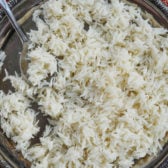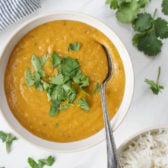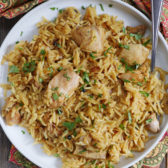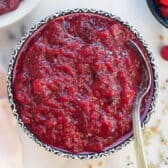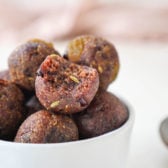Why did I come up with this game? I wanted to share something useful for you – a tool to help with meal planning. I find games to be a fun way to spark an interest in learning. I hope that this game inspires you to make and learn more about Indian cuisine.
So what is a thali?
A thali is a large circular rimmed plate that holds smaller bowls filled with food. According to food historian K.T. Achaya’s A Historical Dictionary of Indian Food, the word “thali” comes from “sthali” which was not a plate, but a pot used during Vedic times to boil rice. He describes a thali as “a circular metal dining plate with raised edges, often accompanied by deep, small circular metal bowls called katoris in which are placed accompaniments to the meal, like dry and wet curries, curds and even desserts like payasam.” He writes that at first, thalis were used mainly in northern parts of India, but that they’re now popular everywhere. In the south, you’re likely to find banana leaves being used as a thali, especially during festivals and weddings. Every region has its own take on the thali, filling the plate with seasonal local dishes.
Everything arrives at or around the same time
Let’s talk about an Indian meal. You should know that unlike American food, most of the time, Indian meals aren’t typically served in “courses,” though that is what you might find in many Indian restaurants and perhaps in some homes these days. Typically, when you eat an Indian meal, you serve and eat several dishes simultaneously – mixing them up, creating your own symphony of flavors! Rip off a piece of roti, grab a little okra, a little eggplant, a bit of yogurt, and plop it into your mouth – yum! Here are some items you might typically find in a Thali:
rice and/or flatbreadlentils/dalvegetablescondiment: chutney, pickle, bothraitasnack
There’s a reason that a Thali encompasses several dishes with different flavors. Food historian Collen Sen writes in her book Feasts and Fasts A History of Food in India, that “according to ancient Hindu dietary theory, every meal is supposed to include all six tastes in the following order: sweet, sour, salty, pungent, bitter, and astringent.” While it’s true that with an Indian meal, there is typically no succession of courses, I would be remiss if I didn’t include this interesting bit of information I learned from Sen’s book. Sen writes that according to the Sushruta Sahita, an ancient treatise on medicine and the foundational text of Ayurveda, “dishes should be served in a certain order. Sweet substances are eaten first to subdue wind, followed by sour and salty dishes to stimulate digestion, and finally pungent foods to subdue phlegm.” A good reason to eat dessert first? Heh.
What is the “Thali Game”?
I already wrote a bit about the game at the start of this post. Still, I want to explain that for the purposes of the game, I’m listing categories on the Thali, mainly to help you differentiate between recipes so that you can create a well-rounded menu. For example, you don’t want 5 chicken curries on a Thali (or maybe you do, ha). Under the “main” category, you’ll find a hearty dish (there are vegetarian and non-veg options), and under the “sides,” you’ll see lighter dishes, perhaps vegetables or snacks, and even a few meat dishes. So go ahead, click the button! And when you see something you like, put a check next to it and continue clicking until you’ve created a menu you love.
Create your own Indian Menu in a click! Check mark recipes to keep and click again to see more options. Click Here!
Main: Instant Pot Kerala Chicken StewRice: Perfect Instant Pot Basmati RiceDal: Instant Pot Red Lentil Dal (Masoor Dal)Side: Sweet and Spicy Fruit Chaat (Indian Fruit Salad)Side: Chicken Pulao Instant Pot RecipeCondiment: Cranberry Chutney (Instant Pot and Stovetop)Dessert: Instant Pot Healthy Ladoo/Pinni (naturally sweetened, gluten-free, paleo)


